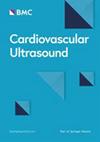运动员心脏的心脏成像:现状与前景
IF 1.6
3区 医学
Q3 CARDIAC & CARDIOVASCULAR SYSTEMS
引用次数: 0
摘要
体育活动有助于心脏形态的变化,这被称为“运动员的心脏”。因此,这些改变可以使用不同的成像方式来表征,如超声心动图,包括多普勒(血流多普勒和多普勒心肌成像)和斑点跟踪,以及心脏磁共振和心脏计算机断层扫描。超声心动图是评估运动员心脏结构和功能最常用的方法,因为它的可用性、可重复性、多功能性和低成本。它可以测量左心室壁厚度、腔尺寸和质量等参数。左心室心肌应变可以通过组织多普勒(使用脉冲波多普勒原理)或斑点跟踪超声心动图(使用二维灰度b模式图像)来测量,这提供了心肌变形的信息。与超声心动图相比,心脏磁共振提供了对心脏形态和功能的全面评估,具有更高的准确性。通过添加造影剂,可以表征心肌状态。因此,它在区分运动员的心脏和病理状况方面特别有效,然而,与其他技术相比,它不太容易获得,也更昂贵。冠状动脉计算机断层扫描用于评估冠状动脉解剖和识别异常或疾病,但由于辐射暴露和成本,其使用受到限制,使其不太适合年轻运动员。一种新颖的方法,血流动力学力分析,使用特征跟踪来量化负责血流的室内压力梯度。血液动力学力分析具有研究心脏内血流和评估心功能的潜力。总之,每种诊断技术在评估运动员的心脏适应性时都有自己的优点和局限性。检查和比较由体育活动引起的心脏适应与通过不同诊断方式确定的心脏结构变化是运动医学领域的关键焦点。本文章由计算机程序翻译,如有差异,请以英文原文为准。
Cardiac imaging in athlete’s heart: current status and future prospects
Physical activity contributes to changes in cardiac morphology, which are known as “athlete’s heart”. Therefore, these modifications can be characterized using different imaging modalities such as echocardiography, including Doppler (flow Doppler and Doppler myocardial imaging) and speckle-tracking, along with cardiac magnetic resonance, and cardiac computed tomography. Echocardiography is the most common method for assessing cardiac structure and function in athletes due to its availability, repeatability, versatility, and low cost. It allows the measurement of parameters like left ventricular wall thickness, cavity dimensions, and mass. Left ventricular myocardial strain can be measured by tissue Doppler (using the pulse wave Doppler principle) or speckle tracking echocardiography (using the two-dimensional grayscale B-mode images), which provide information on the deformation of the myocardium. Cardiac magnetic resonance provides a comprehensive evaluation of cardiac morphology and function with superior accuracy compared to echocardiography. With the addition of contrast agents, myocardial state can be characterized. Thus, it is particularly effective in differentiating an athlete’s heart from pathological conditions, however, is less accessible and more expensive compared to other techniques. Coronary computed tomography is used to assess coronary artery anatomy and identify anomalies or diseases, but its use is limited due to radiation exposure and cost, making it less suitable for young athletes. A novel approach, hemodynamic forces analysis, uses feature tracking to quantify intraventricular pressure gradients responsible for blood flow. Hemodynamic forces analysis has the potential for studying blood flow within the heart and assessing cardiac function. In conclusion, each diagnostic technique has its own advantages and limitations for assessing cardiac adaptations in athletes. Examining and comparing the cardiac adaptations resulting from physical activity with the structural cardiac changes identified through different diagnostic modalities is a pivotal focus in the field of sports medicine.
求助全文
通过发布文献求助,成功后即可免费获取论文全文。
去求助
来源期刊

Cardiovascular Ultrasound
CARDIAC & CARDIOVASCULAR SYSTEMS-
CiteScore
4.10
自引率
0.00%
发文量
28
审稿时长
>12 weeks
期刊介绍:
Cardiovascular Ultrasound is an online journal, publishing peer-reviewed: original research; authoritative reviews; case reports on challenging and/or unusual diagnostic aspects; and expert opinions on new techniques and technologies. We are particularly interested in articles that include relevant images or video files, which provide an additional dimension to published articles and enhance understanding.
As an open access journal, Cardiovascular Ultrasound ensures high visibility for authors in addition to providing an up-to-date and freely available resource for the community. The journal welcomes discussion, and provides a forum for publishing opinion and debate ranging from biology to engineering to clinical echocardiography, with both speed and versatility.
 求助内容:
求助内容: 应助结果提醒方式:
应助结果提醒方式:


